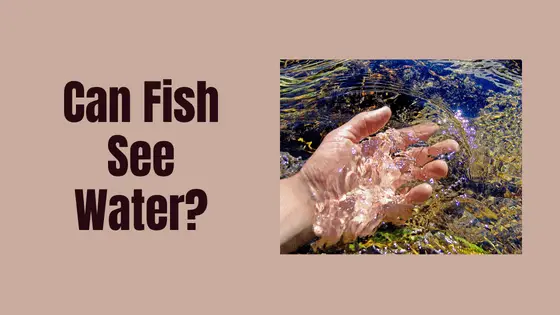If you have ever tried to swim without a pair of goggles, you probably know that water and human eyes don’t go together very well. When we try to see through the water, we get a burning sensation and a blurry, murky image. However, fish never need eye protection to see underwater since they have evolved to see more colors and light than we could ever hope to.
Fish can see water in the same way that we see it. If the water is clear, fish cannot detect it with their eyes. However, fish can detect light refraction better than humans, allowing them to see particles and other objects in and around the water.
So, let’s dive in and talk about how and what fish see. I’ll tell you how fish perceive light, water, air, and color and help you get a fish’s eye view of what happens underwater.
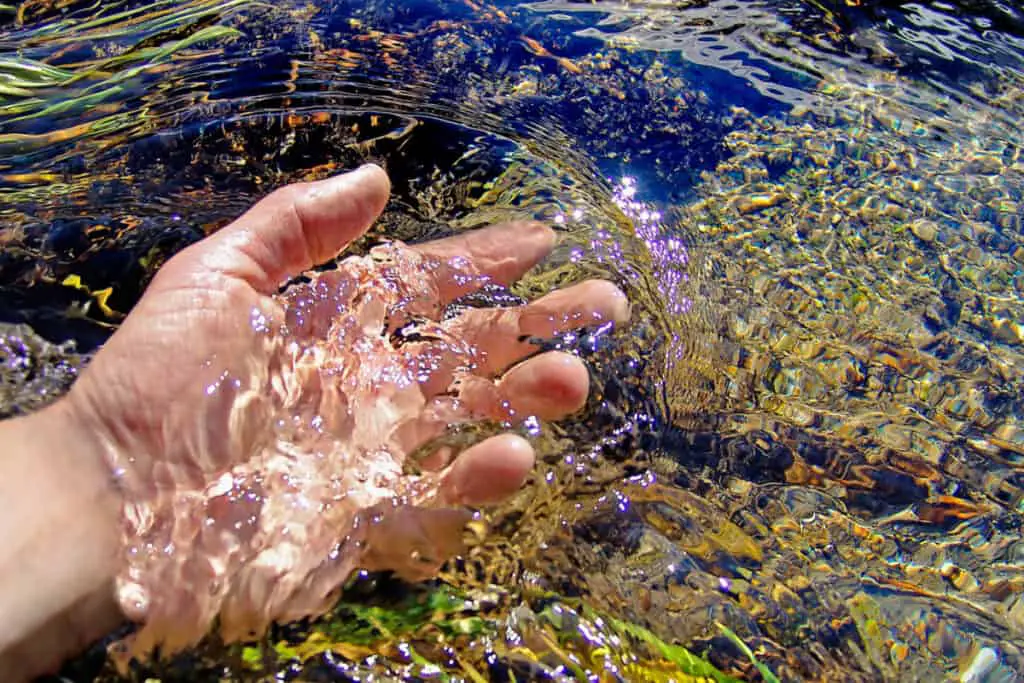
Do Fish Have Good Vision?
Fish have good vision. Fish have large round eyes with thick lenses. These lenses allow fish to sense and correct light refraction while getting a broad, panoramic view that spans from their sides to behind them.
Let’s explore what makes fish eyes so good at detecting light, prey, mates, and predators.
Fish Eyes Have a High Refractive Index
Have you ever looked into a glass of water with a straw in it and noticed that the water makes the straw look as if split in half?
That’s called refraction, and it occurs when light hits both the water and the air at the same time. Although we perceive the light reflecting through the air and the water, the light-waves that bounce off the water move more slowly and bounce back into the air, which creates a lag in how we see them—hence, refraction.
For a visual explanation of this phenomenon, you might want to check out this video from Science Sauce:
https://www.youtube.com/watch?v=zarxpu43-ls.
Although we may see the straw as split in half in this refraction experiment, since a fish’s eyes are better acclimated to perceive light in water, they would not see the straw as divided in half the same way we do. Instead, the straw would split in the opposite direction.
Fish eyes are rounder than most animals, bending out to create a dome-like appearance on either side of a fish’s face. This round lens makes them excellent at seeing things around them since the spherical shape catches the light well and allows them to perceive refracted light from all around them.
While the human eye only has a refractive index of 1.376, similar to that of water, fish eyes have a refractive index of 1.67, which is higher than any other vertebrate.
This high index allows fish eyes to catch and perceive more light. With this advantage, fish can get a more accurate view of what is happening above and below the water with little distortion.
Fish Have Round Eyes for a Panoramic View
Believe it or not, fisheye camera lenses are a pretty accurate representation of what a fish sees underwater, thanks to the spherical shape of their eyes.
Fish have a broader range of vision than humans. Their wide-set eyes, often located on each side of the fish’s body, give them a clear image of what is beside, above, and behind them. The position of their eyes works a bit like the side-view mirrors on a vehicle, allowing them to keep an eye out for predators.
These rounded lenses give them almost a 360° view of what’s happening around them. However, they can’t see everything.
Most fish have a blind spot right in front of their faces since the eyes are so far apart, and their frontal vision is far poorer than their side vision. For that reason, fish have far better peripheral vision than us, but we can likely see what’s in front of us better than fish.
In addition, fish only have a clear vision when the object they are looking at is directly beside one of their eyes. If something is far away, below, above, or behind them, all they can see is the light or shadow reflecting off that object.
So, next time you’re looking into your aquarium, take note of how your fish approach you. If they swim side to side with one of their eyes near the glass, they’re likely checking you out!
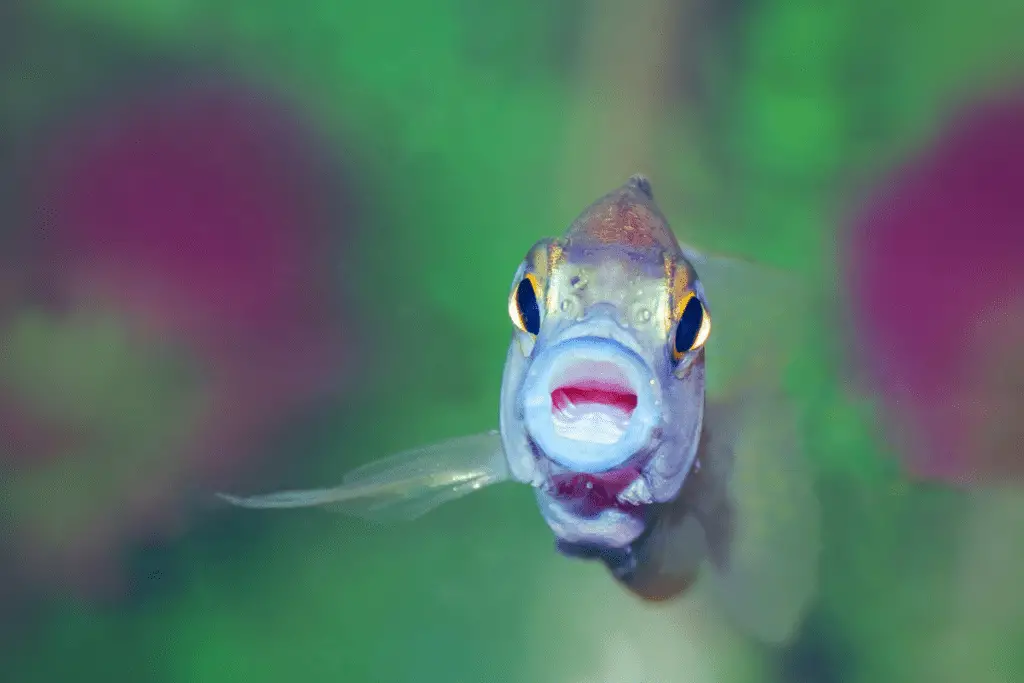
Can Fish See Colors?
Most fish can see colors. Although scientists have not tested the color-vision of every fish species, researchers have proven that most common tropical aquarium fish, such as goldfish, can see more colors than we can.
How Organisms See Color
Before we dive into the specifics of fish eyes, let’s take a quick look at what makes any organism see color.
The first prerequisite for color vision is an eye with a retina. The retina is a thin inner film that surrounds the interior of an eye. This film contains rods and cones, or particles that detect how much light we see, and nerves that transmit messages to our brains.
When seeing color, the cones in our eyes pick up on the wavelengths of each color we see. The human eye only has three types of cones, each of which picks up red, green, and blue light. With these colors, we can comprehend the hues of the rainbow.
How Fish See Color
An animal — or fish — must also have cones in their retinas to see in color.
According to Ellis R. Loew, a professor of Biology at Cornell, scientists have proven that goldfish have four cones in their retinas that detect red, green, blue, and ultraviolet colors.
Scientists have also proven that other fish, such as Ambon damselfish and carp, can also see ultraviolet, green, blue, and red light. However, most fish can probably see in these four colors as well. We just need to do some more research to prove it.
So, while fish can see the ROY G BIV rainbow of colors, they can see beyond it, detecting color wavelengths shorter than those found in violet light.
There are many reasons why many tropical and marine fish have these extra color receptors in their eyes. However, the most straightforward explanation is that fish use ultraviolet light to identify each other and food sources.
That’s precisely why many fish, such as tetras and goldfish, have bright markings. They use these markings to stand out to mates and recognize other fish that belong to their school or group.
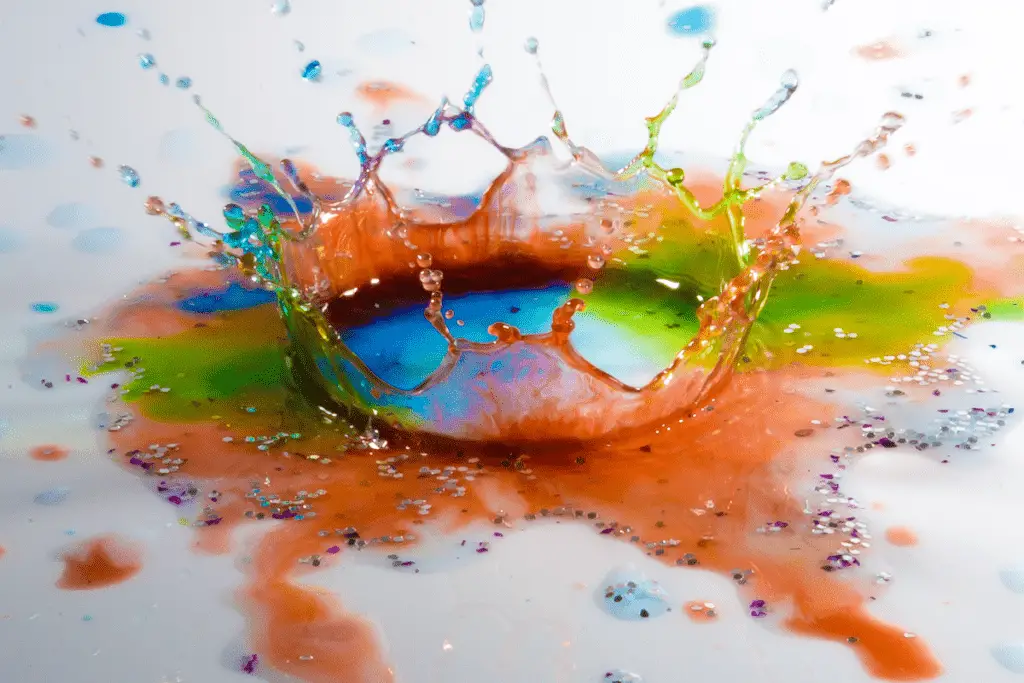
Can Fish See in and Out of Water?
Fish can see in and out of water. Fish see out of water similarly to how we see into it. When fish look above the surface or out of your aquarium, they see the light reflecting off the water and the objects around them.
When fish look out of the water, they likely see a lot of light. Think of what it looks like to see the ocean during sunset. Those glittering troughs won’t allow you to see the fish underneath the water, nor will they let the fish see you.
However, when light does not reflect off the water, fish can see you and other objects relatively clearly. Since their eyes are so sensitive to changes in light, they will primarily perceive movement and light changes in their environment.
To learn more about how fish see in and out of the water, you may want to watch this brief video about the archerfish, which uses its keen eyes to hunt above the surface:
https://www.youtube.com/watch?v=qkhhRfmQD-o.
Can Fish See the Water?
Fish can’t see the water, but they can see the particles within the water. Dirt, silt, algae, plankton, and other tiny particles suspended in water make it more visible to fish. However, since fish only see what’s floating in the water, they cannot truly see water.
Mush the same way we often forget that the air is there, fish don’t genuinely notice water. They only see what is imperative to their survival, which is what’s in the water.
Can Fish See Air?
Fish can’t see air any more than we can. Air, like water, looks clear to fish unless something in the air is obstructing light. For example, a fish can see smoke, mist, and insects in the air, although they cannot see the air itself.
While fish have excellent vision and see more than we do, they cannot see air since it only has a refraction index of 1.0. This low value means that air doesn’t reflect enough light for fish or us to see its presence.
On top of that, since fish rely on light to see even more than we do, they have very little sensitivity to how nonreflective substances, such as air, appear.
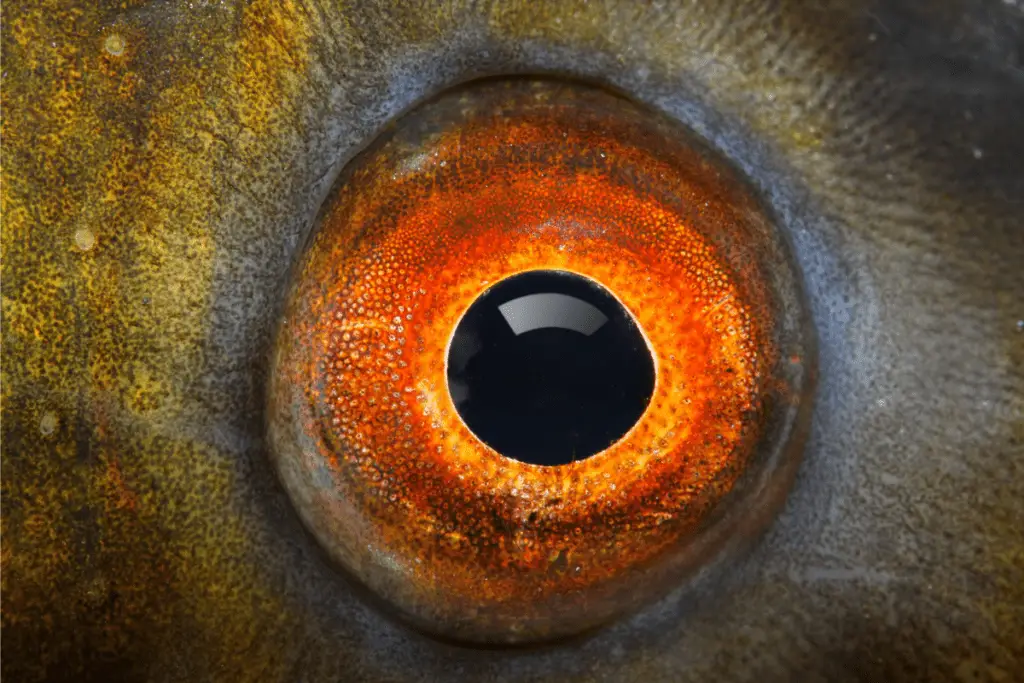
How Can Fish See in Dirty Water?
Fish can see in dirty water thanks to their sensitivity to light. Fish that live in muddy water also often have a coating of guanine crystals in their retinas, which amplify and reflect red light better than the retina’s cones.
Fish that live in clear water don’t adapt too well to murky water from increased algal blooms or erosion. However, fish species that have spent thousands, if not millions, of years, adapting to silty water have an extra trick up their sleeves.
Fish that live in muddy rivers and streams have excess guanine, one of the four major components of DNA, inside their eyes. The guanine is in crystal form, which, in practice, turns the fish’s eye into an inside-out disco ball, amplifying light waves.
When the water gets dark and murky, this guanine layer will amplify light, bouncing color waves back and forth inside the fish’s retina. This reflectivity allows the fish to see, even when it is very dark in the water.
Although this adaptation allows fish to detect light better, it reduces the resolution of their vision. Fish with this adaptation see everything in a haze, only picking up on light, color, and shadow.
Conclusion
Fish have eyesight very similar to ours, using light and color to see the world around us. However, fish have unique abilities to see reflected and ultraviolet light better than we can, allowing them to find each other and locate nearby predators underwater.
Fish see best when the water is clear and can only see in detail when you are right in front of the dark spot on either of their eyes.

